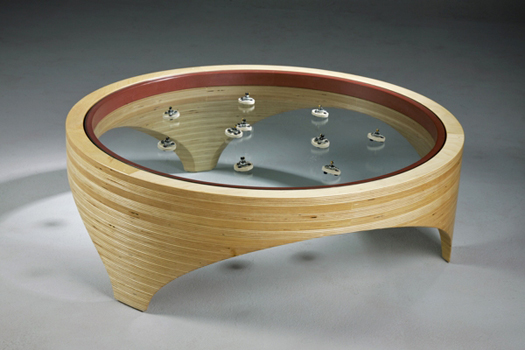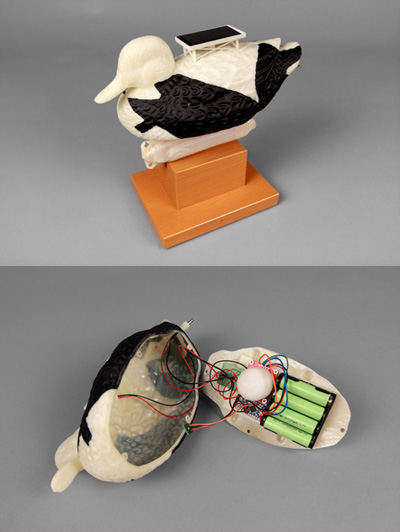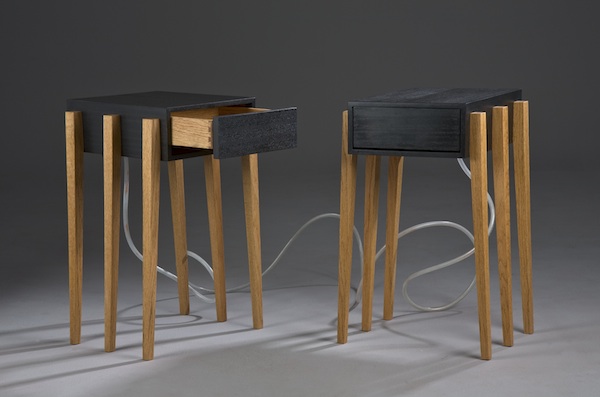
Click here to watch the Petri Table in action!
Pinewood Derby 2.0: A Two-Week, All-Levels Wood and Kinetic Electronics Workshop
May 26 – June 7, 2013
Do you need a reboot? This workshop is a mashup in which the folksy simplicity of the Boy Scouts’ pinewood derby will collide with the techno-sophistication of Arduino micro-controllers. The result will be simple wooden vehicles with potentially complex behaviors. They might be programmed to avoid obstacles, follow a flashlight, or draw interesting shapes on the floor. Technical information and demonstrations will include soldering, coding in the Arduino programming language, and the fundamentals of fabrication in wood.

Click here to see Dazzle Duck in action!
Pinewood Derby 2.0 will introduce students to the amazing potential of integrating micro-controllers into physical objects. All students will begin by assembling Sparkfun’s ProtoSnap – Minibot. This kit includes everything you need to program an Arduino micro-controller and use it to control two motors in response to light sensors and other inputs. Assembling this kit will introduce the basics of soldering, assembling mechanical components, and programming in the Arduino environment. Once we have completed the stock kits, we will begin to customize our vehicles using the tools in the wood studio to create chassis, wheels, and other components. We will learn to customize both the physical arrangement of the vehicles, while also changing their programming allowing them to move over different terrain and respond to different variables in the environment. The course will culminate in a race through the woodworking studio. Suggested reading for the course: Valentino Braitenberg’s Vehicles: Experiments in Synthetic Psychology, Massimo Banzi’s Getting Started with Arduino, and Arduino.cc‘s Learning and Reference pages.
Matthew Hebert creates work that deals with technology and its effects on the environment and our sense of place, taking recognizable furniture forms and layering new forms of use and meaning onto them. He received his Bachelor of Arts in Architecture from the University of California-Berkeley and his Master of Fine Arts at California College of the Arts. He has taught at several schools including the University of Wisconsin – Madison, CalArts, and The School of the Art Institute of Chicago, and is currently Assistant Professor of Furniture at San Diego State University. Matthew Hebert has been working under the studio name eleet warez since the mid-90s. His work has been exhibited in venues including The Museum of Contemporary Art San Diego, The Berkeley Art Museum, The Milwaukee Art Museum, The Museum of Craft and Folk Art in San Francisco, The California Center for the Arts, The Chicago Cultural Center, and Core77 in New York. Additionally, he is a member of the collaborative public art team Unmanned Minerals, with Reno-based poet Jared Stanley and Los Angeles-based artist Gabie Strong.
You can click here to visit Matthew’s website, where you can see more of his work, including videos of ambulatory wooden sculptures like The Lawnmonster.
And you can click here to read Man in the Machines, a profile of Matthew Hebert by Kinsee Morlan for KCET San Diego.

Interested? Click here for more information about this and Penland’s other summer workshops in wood.
♫ Penland summer! Here it comes! Oh, oh, oh! ♫



Comments are closed.